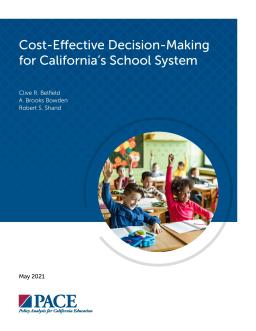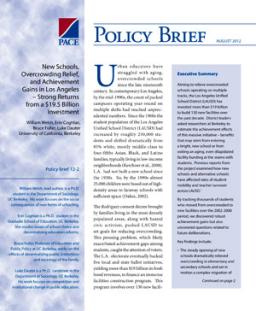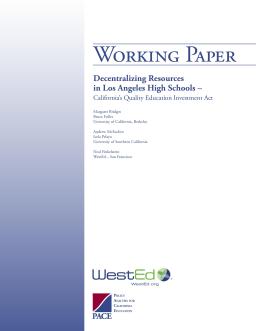Published
Summary
A report on the importance of economic analysis in decision-making in CA's school system. Economic evaluations can help identify the most effective policies and interventions while reducing waste and ultimately improving outcomes for students. Studied here is the cost-effectiveness analysis (CEA) method, its benefits, and its broad applicability. To be more influential, economic analysts should focus on policies and programs that require significant funding, investigate how results are relevant to decision-makers, and consider how resources can be allocated towards cost-effective programs.
Strong Returns from a $19.5 Billion Investment
Published
Summary
The LAUSD invested over $19B to build 130 new facilities to relieve overcrowded schools. A PACE policy brief analyzed its effects on student achievement and found robust gains for many elementary-school pupils who switched from old to new facilities. However, significant gains were limited to elementary school students and new high school facilities produced weak and inconsistent achievement gains. The report also tracked thousands of students who moved from overcrowded to new facilities over the 2002-2008 period.
California’s Quality Education Investment Act
Published
Summary
This working paper examines the use of Quality Education Investment Act (QEIA) funds, which allocated $2.6B over seven years to California's lowest-performing schools. The authors conducted a study of four Los Angeles high schools to investigate how QEIA dollars were spent in the first year, who made the decisions, and how funds were used to improve teaching and the instructional program. The study found that district officials and principals had discretion in allocating funds, consistent with recent efforts to deregulate categorical-aid programs and give local educators fiscal discretion.


